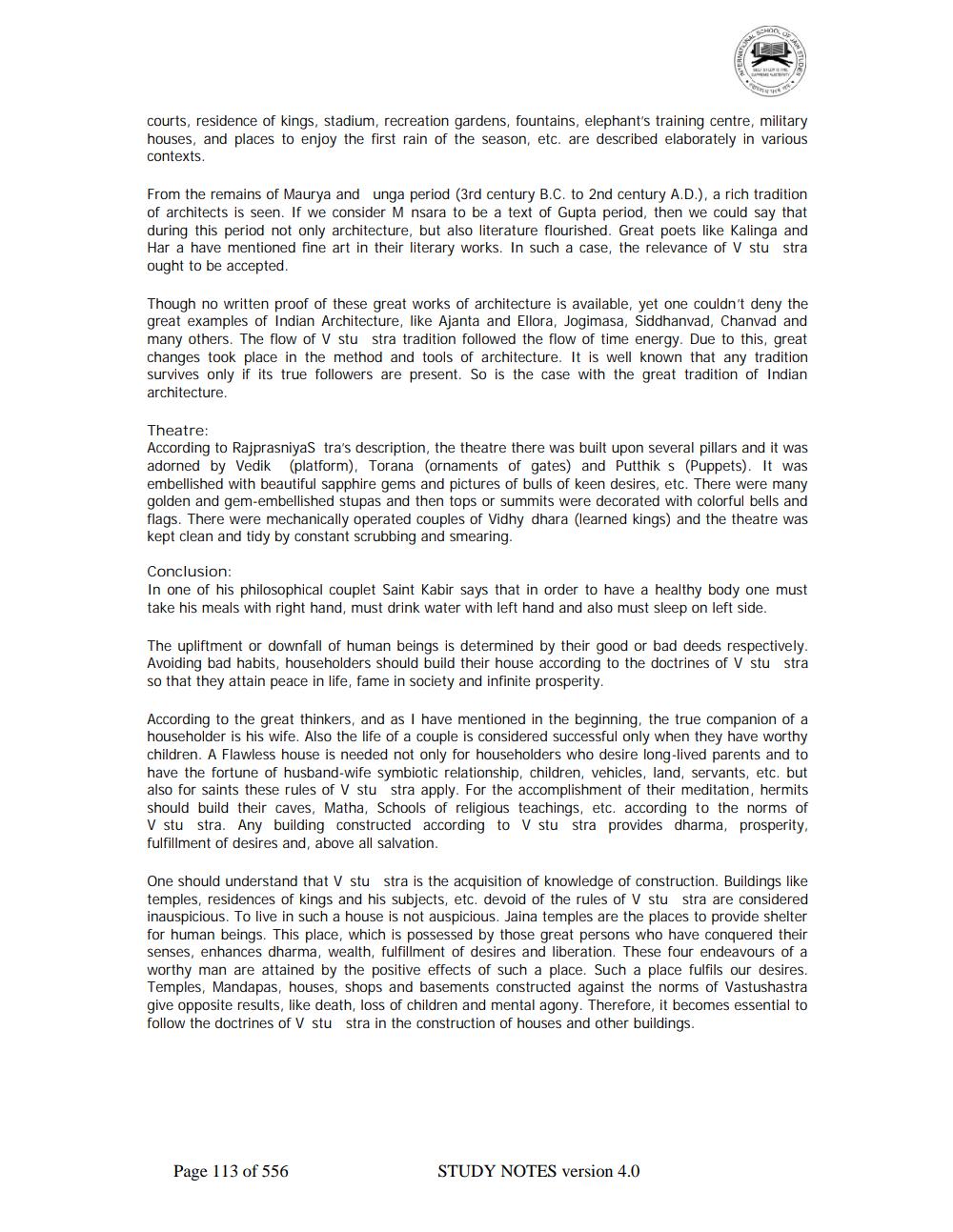________________
courts, residence of kings, stadium, recreation gardens, fountains, elephant's training centre, military houses, and places to enjoy the first rain of the season, etc. are described elaborately in various contexts.
From the remains of Maurya and unga period (3rd century B.C. to 2nd century A.D.), a rich tradition of architects is seen. If we consider M nsara to be a text of Gupta period, then we could say that during this period not only architecture, but also literature flourished. Great poets like Kalinga and Har a have mentioned fine art in their literary works. In such a case, the relevance of V stu stra ought to be accepted.
Though no written proof of these great works of architecture is available, yet one couldn't deny the great examples of Indian Architecture, like Ajanta and Ellora, Jogimasa, Siddhanvad, Chanvad and many others. The flow of V stu stra tradition followed the flow of time energy. Due to this, great changes took place in the method and tools of architecture. It is well known that any tradition survives only if its true followers are present. So is the case with the great tradition of Indian architecture.
Theatre: According to RajprasniyaS tra's description, the theatre there was built upon several pillars and it was adorned by Vedik (platform). Torana (ornaments of gates) and Putthik s (Puppets). It was embellished with beautiful sapphire gems and pictures of bulls of keen desires, etc. There were many golden and gem-embellished stupas and then tops or summits were decorated with colorful bells and flags. There were mechanically operated couples of Vidhy dhara (learned kings) and the theatre was kept clean and tidy by constant scrubbing and smearing.
Conclusion: In one of his philosophical couplet Saint Kabir says that in order to have a healthy body one must take his meals with right hand, must drink water with left hand and also must sleep on left side.
The upliftment or downfall of human beings is determined by their good or bad deeds respectively. Avoiding bad habits, householders should build their house according to the doctrines of V stu stra so that they attain peace in life, fame in society and infinite prosperity.
According to the great thinkers, and as I have mentioned in the beginning, the true companion of a householder is his wife. Also the life of a couple is considered successful only when they have worthy children. A Flawless house is needed not only for householders who desire long-lived parents and to have the fortune of husband-wife symbiotic relationship, children, vehicles, land, servants, etc. but also for saints these rules of V stu stra apply. For the accomplishment of their meditation, hermits should build their caves, Matha, Schools of religious teachings, etc. according to the norms of V stu stra. Any building constructed according to Vstu stra provides dharma, prosperity, fulfillment of desires and, above all salvation.
One should understand that V stu stra is the acquisition of knowledge of construction. Buildings like temples, residences of kings and his subjects, etc. devoid of the rules of V stu stra are considered inauspicious. To live in such a house is not auspicious. Jaina temples are the places to provide shelter for human beings. This place, which is possessed by those great persons who have conquered their senses, enhances dharma, wealth, fulfillment of desires and liberation. These four endeavours of a worthy man are attained by the positive effects of such a place. Such a place fulfils our desires. Temples, Mandapas, houses, shops and basements constructed against the norms of Vastushastra give opposite results, like death, loss of children and mental agony. Therefore, it becomes essential to follow the doctrines of V stu stra in the construction of houses and other buildings.
Page 113 of 556
STUDY NOTES version 4.0




